The Start of Your Seedlings
It might seem obvious, you plant a seed and then you harvest, right? If you’ve tried it before, you know that this is certainly not always the case. Most vegetables and flowers have special needs before they yield a lot of harvest. Besides enough water, the right amount of sun, and the perfect sowing moment, they also like certain space.
A good example of this is the difference between lettuce and tomatoes. A lettuce plant prefers to start in a small space, and a tomato wants space otherwise it stops growing, but why?
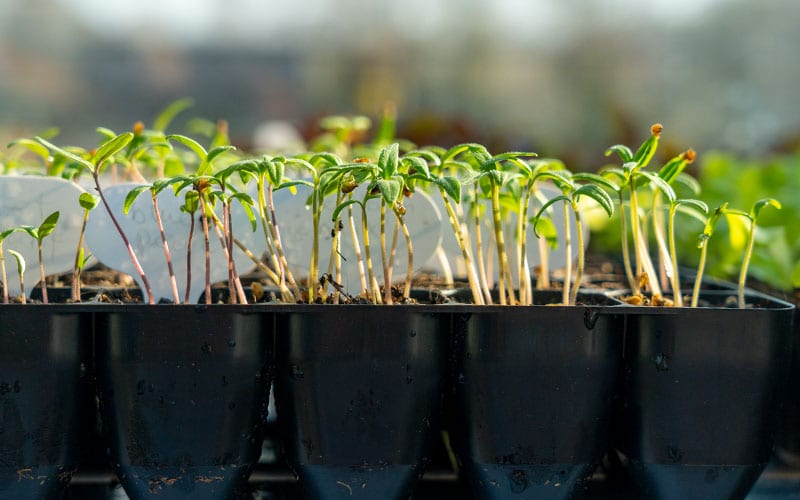
Why Do Plants Have Different Requirements?
A seed is a seed, a plant is a plant. They all want to grow. So why is there a preference for the size of the pot in which they start?
There are many reasons, for example, the amount of compost, thus nutrition, the amount of water a plant needs, and how deep or wide the plant prefers to root.
A lettuce plant roots slowly and shallowly, which means it cannot form a nice root ball in a large pot. This also leaves too much water in the soil, leading to seed and root rot. Tomato roots shallowly as well, but much wider. And, a tomato stops growing if there isn’t enough space. Because we prefer to start tomatoes in March before the frost is over.
The tomato needs a large pot to develop well and not limit its growth. On the other hand, you also have cabbages and legumes. These root deeply, not widely. So in a shallow pot, the main root grows right out of the bottom.
Thus, each plant has its preference!
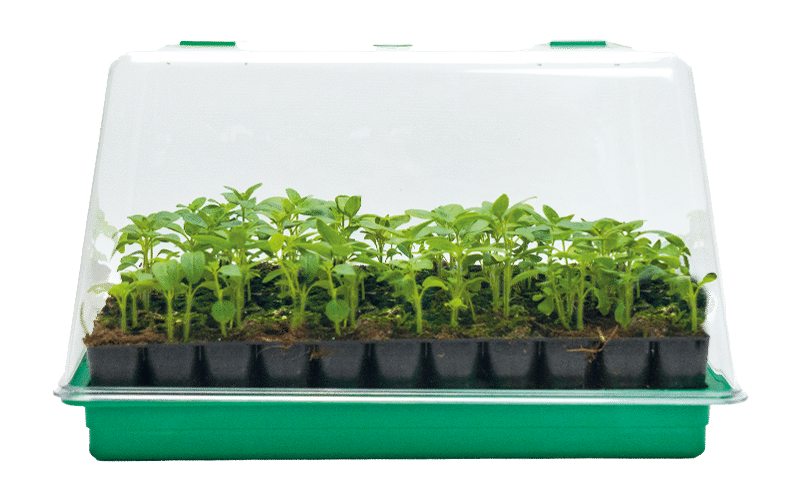
The Basics: What Are Propagation Trays and Why Are They Important?
Before we delve into the details, let’s take a moment to understand the basics. Propagation trays are not just containers; they are the start of your successful garden. But how do they work?
Now that you know each plant has its preferences, you understand why the size of the pot is important, but why propagation trays? The handy thing about a propagation tray is that you can sow multiple plants in one container but still give each plant its own space.
Imagine a whole windowsill filled with 40 plant pots or one propagation tray with 40 cells. The advantage is also that the cell sizes of propagation trays can be smaller than most pots, so you can start more in the same space and use less compost.
Another significant advantage of the right propagation trays is that they are developed to prevent certain growth problems. Think, for example, of root binding, where the roots endlessly twirl around each other. This can lead to transplant shock, where the plant struggles to continue growing when you put it in the garden. Or think of overwatering, which causes root and seed rot. Many growth problems can be prevented with the right trays.
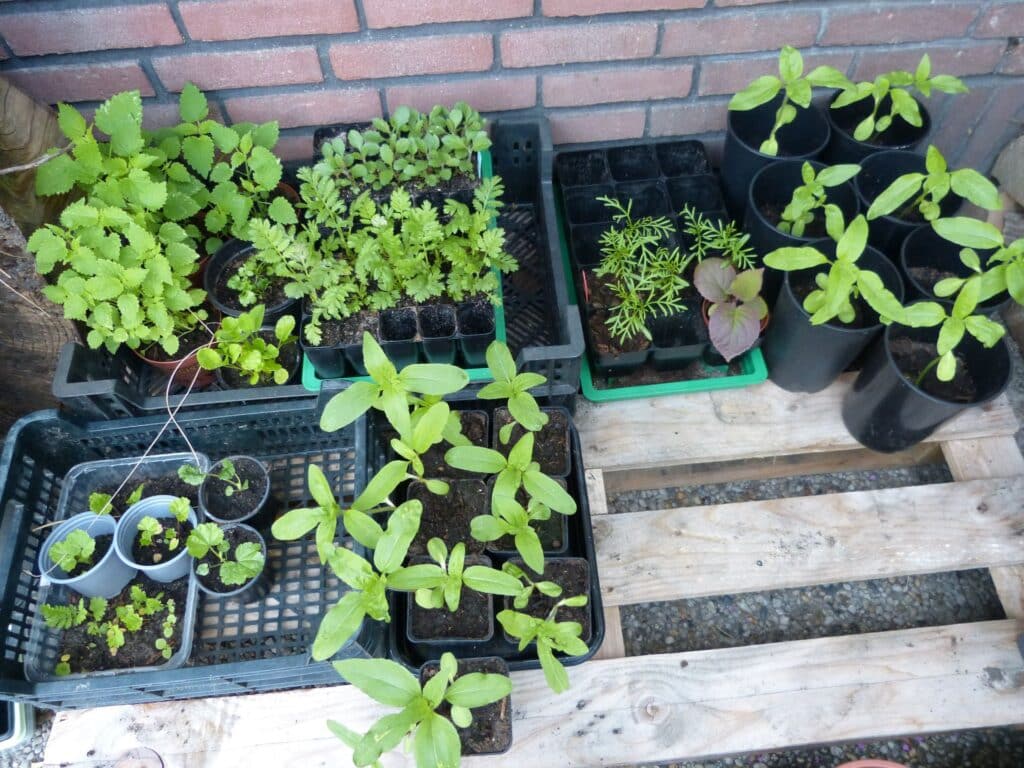
Why Are There So Many Different Sizes, and Do You Need Them All?
There’s something for everyone, as they say. We have a wide range of sturdy propagation trays, each with different enthusiasts. The main thing to mention is that everyone grows in their way. Some have a very specific need to keep plants in a propagation tray for a very long time and choose very large cells.
Others want to get into the garden as quickly as possible and choose a small cell size. One is not better than the other, so personal preference plays a role. We advise based on the most optimal environment for certain plants, but if you want to start your tomato in the smallest tray and then put it outside, of course, you can!
So, the ultimate advice – try out what works for you and what fits your gardening style.
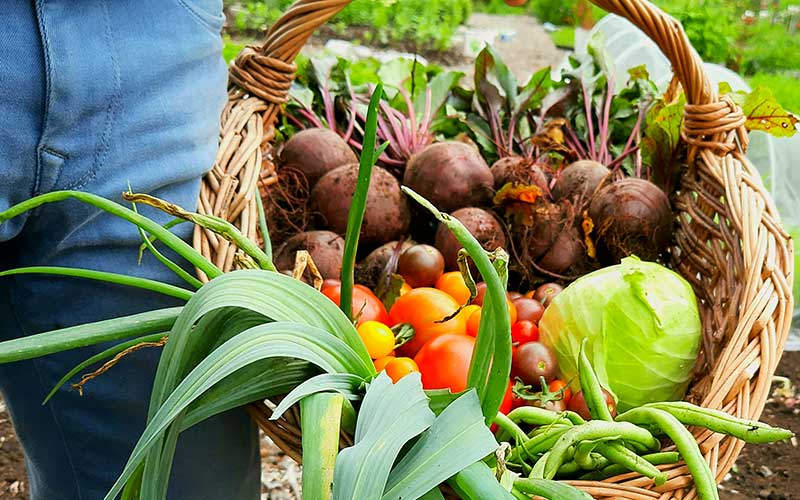
Your Role as a Gardener: Why the Choice of a Propagation Tray Is So Important
The success of your garden thus depends on the strength of your plants. The choice of the pot, therefore, affects everything: from root growth to leaf formation and the size of the harvest. How do you determine the right pot for your plant? Fortunately, we have endlessly tested to find out what your plants need. To make this clear, we have divided the plants into a few simple-to-remember categories.
- Leafy Greens: endive, lettuce, spinach, lamb’s lettuce
- Root, Onion, and Tuberous Vegetables: beetroot, radish, onions, leek
- Cabbage & Legumes: white cabbage, red cabbage, savoy cabbage & peas, chickpeas, snap peas, green beans
- Fruit Vegetables: zucchini, cucumber, bell pepper, tomatoes
- Stem Vegetables: celery, fennel, asparagus, artichoke
- Herbs: basil, thyme, lavender, sage
- Flowers with Small Seeds: asters, rudbeckia, snapdragons
- Flowers without Deep Roots: calendula, didiscus, phlox, tagetes (marigolds), geum, Limonium (sea lavender), strawflower
- Fast-Growing Flowers: cosmos, zinnia, dianthus (carnations), scabiosa, lupins, poppy, digitalis (foxglove)
For the complete list, you can look here. Search what you want to grow and get a seed tray advice or select the tray and see what will grow well in them.
Which cell size is handy for which plant and why?
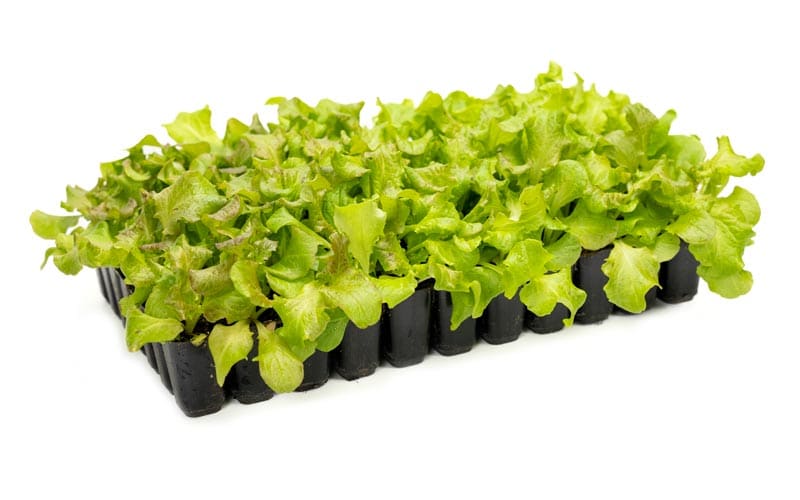
Vegetable Seeds
Leafy Greens
Leafy greens like lettuce, endive, and spinach need relatively little space to start. If you choose a large pot or propagation tray, you’ll find that the seeds come up poorly. This is often because the compost is too wet and remains so because the water is not used. And when it’s time to move them out of the pot, you’ll find that the roots haven’t filled the pot yet. This makes it difficult to transplant the plant without damaging the root ball.
Therefore, we recommend the Charles Dowding 60-cell or 77-cell low propagation trays. A cell volume of 20cm³ to 35cm³ or a cell size of 2.5 to 3cm. These can also be found in the small Charles Dowding 15 & 30-cell trays.
Root, Onion, and Tuberous Vegetables
Root, onion, and tuberous vegetables like beetroot, radish, onions, and leek prefer a bit more space. This is especially the case if you choose multi-sowing, where you sow more seeds per cell. It’s important to note that carrots and parsnips are not ideal for pre-sowing; they thrive best when sown directly where they will ultimately grow. This has to do with the taproot, which prefers not to be disturbed.
For these, you can choose the 40-cell low or 28-cell low propagation trays. A cell volume of 70cm³ to 115cm³ or a cell size of 4 to 5cm.
Cabbage and Legumes
Cabbage plants like white cabbage, red cabbage, broccoli & cauliflower are in the same category as legumes like peas, sugar snaps, and green beans. These crops often root a bit deeper. Therefore, it’s better to choose a deeper propagation tray. They don’t necessarily have to root very wide, so a narrow high tray is fine.
The advice for cabbage and legumes is the 40-cell deep propagation tray. It’s important with these types of crops that they don’t like to stay in the propagation tray for too long. The cells get filled with roots, and then it’s time to transplant or plant them out.
Fruit Vegetables
Courgettes, cucumbers, bell peppers, and tomatoes need plenty of space. Especially courgettes and cucumbers grow quickly and widely. The bell peppers and tomatoes do not necessarily quickly but do grow wide. And, they also need to stay in the propagation tray for a long time.
The ideal propagation tray for fruit vegetables is the low 15-cell. With a cell size of about 7cm and a cell volume of 310cm³, this provides the ideal growing environment for your plants. Knowing this, if you only grow a few of them, feel free to use P7 or P9 pots!
Stem Vegetables
Then, of course, we have the stem vegetables like celery, fennel, asparagus, and artichoke. These grow a bit like the tuberous vegetables. They like some space but do not need too much.
For these, you can also choose the 40-cell low or 28-cell low propagation trays. A cell volume of 70cm³ to 115cm³ or a cell size of 4 to 5cm.
Herbs
Herbs like basil, thyme, lavender, and sage grow quite slowly and are sensitive to too much water in the compost. To prevent this from happening, we choose a small cell.
Therefore, we recommend the Charles Dowding 60-cell or 77-cell low propagation trays. A cell volume of 20cm³ to 35cm³ or a cell size of 2.5 to 3cm. These can also be found in the small Charles Dowding 15 & 30-cell trays.
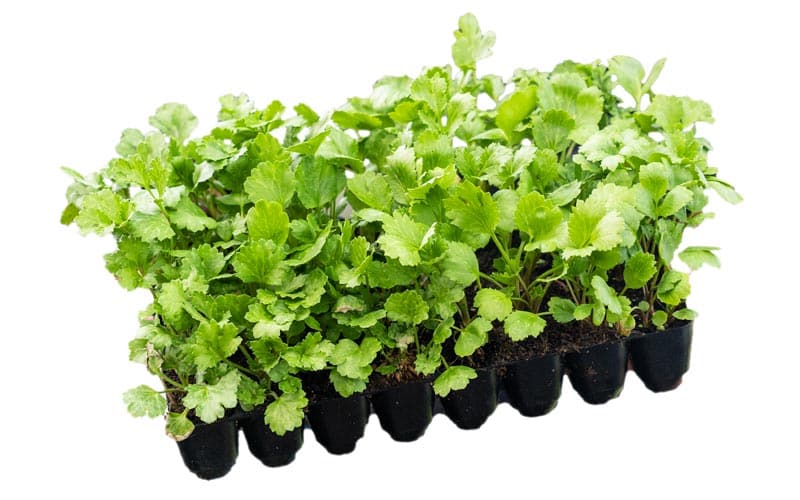
Flower Seeds
Flowers with Small Seeds
Flower seeds like asters, rudbeckia, and snapdragons are very small, so it takes more time for them to grow. To prevent them from having too much space, we choose a small cell size. It’s important to note that you may need to transplant the plants into a 40-cell deep tray after they have filled the small cell but cannot yet go outside.
Therefore, we recommend the Charles Dowding 60-cell or 77-cell low propagation trays. A cell volume of 20cm³ to 35cm³ or a cell size of 2.5 to 3cm.
Flowers without Deep Roots
We also have flower varieties with normal-sized seeds that don’t necessarily need to root deeply, such as calendula, didiscus, phlox, and strawflower. They grow a bit faster than the small seeds and therefore like a bit more space. For these, use a slightly larger cell size.
For these, you can choose the 40-cell low or 28-cell low propagation trays. A cell volume of 70cm³ to 115cm³ or a cell size of 4 to 5cm.
Fast-Growing Flowers
Last but not least, the fast-growing flowers like cosmos, zinnia, lupines, poppy, digitalis (foxglove). Because they grow quickly, they are best started directly in a larger tray. This way, you don’t have to keep transplanting them.
We choose a deep 40-cell propagation tray for this. With a cell size of 4cm and a volume of around 115cm³, it’s ideal for your flower garden!
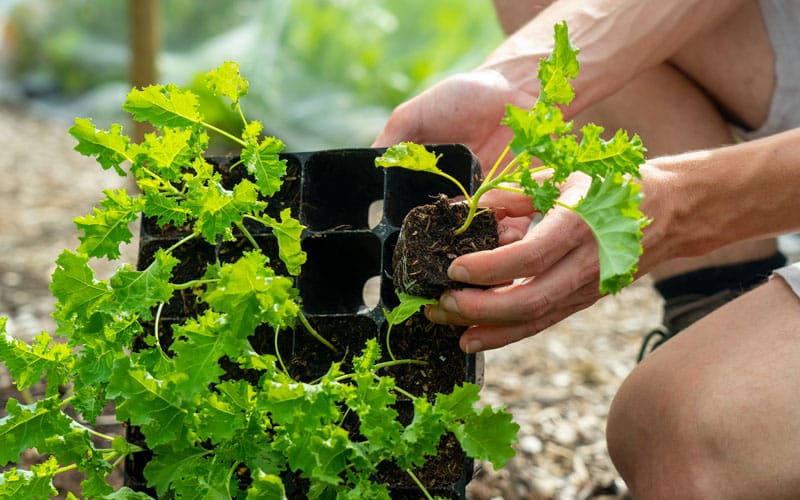
The Different Types of Propagation Trays: Why not all of them?
There is a part of the propagation trays that I have not advised so far, why not? You will notice on your propagation adventure that it is not a one-size-fits-all situation. Sometimes you are specifically looking for a particular cell size or just a small tray that fits perfectly on your windowsill.
That’s why there is a wide range of propagation trays that I haven’t mentioned yet. Some gardeners prefer very deep large propagation trays like the 15-cell deep, 77-cell deep and 28-cell deep trays. These can be very handy for, for example, corn and the cultivation of trees and shrubs. But because they use so much compost, we generally do not recommend them to someone who is still searching for what is ideal for them.
So the advice is, go out and explore. Try out the standard sizes and discover what works for you!
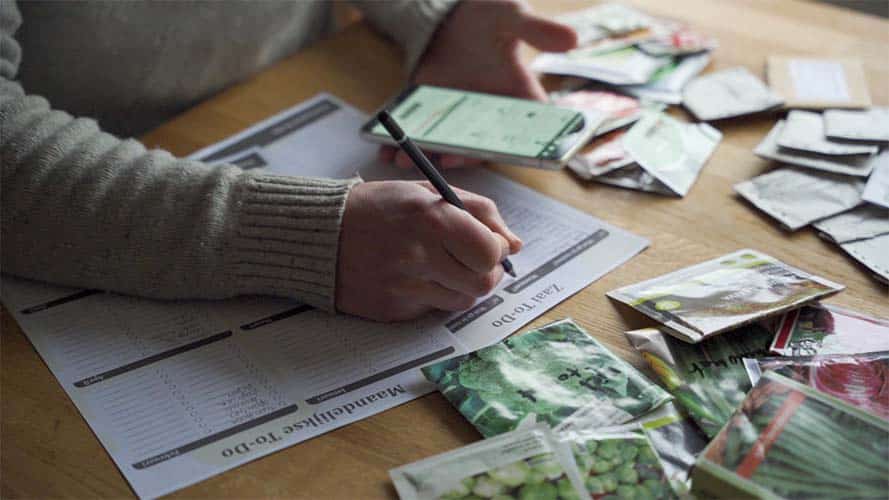
Practical Tips and Tricks
Besides choosing the right tray, some techniques and tips can increase the success of your garden. To help with this, I have created a free online sowing course. In this course, I explain step by step what you need to pay attention to when pre-sowing and how to guarantee success. You can sign up here and start immediately!
Your Garden, Your Story
It’s time for your best gardening season ever. And it all starts with sowing the first seed. This year, the garden is once again a canvas that can be filled with vegetables and flowers. A new year, a new garden. Try out your sturdy propagation trays now!
Wishing you lots of growing pleasure!
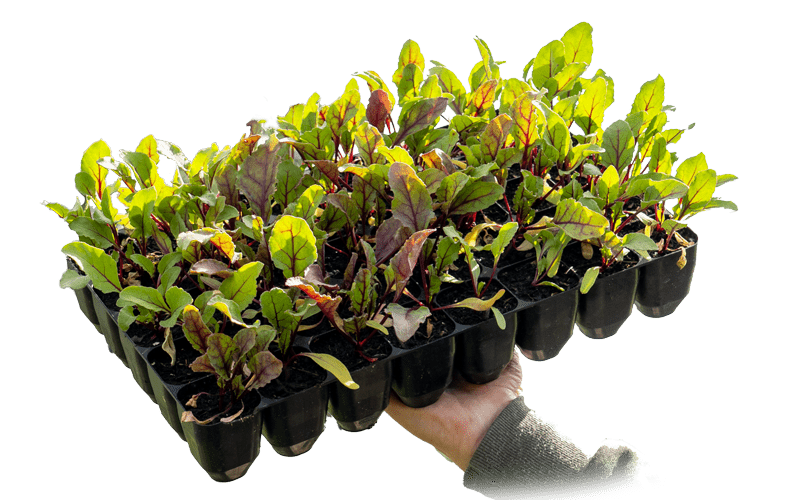
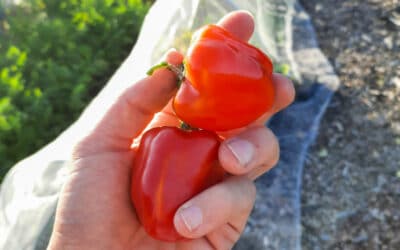
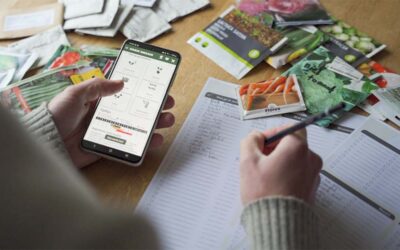
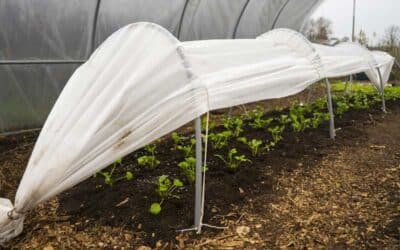

0 Comments